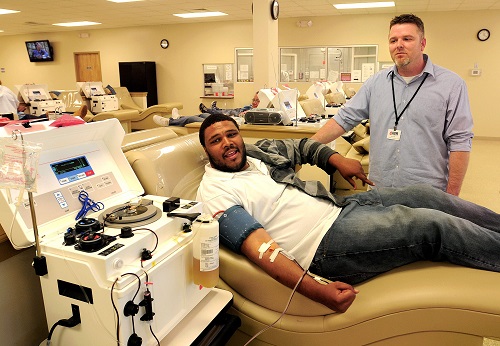Does Donating Plasma Hurt?
It is a usual practice to donate blood, however, it is seen less often that people donate plasma due to a simple misunderstanding that donating plasma might hurt or cause some damage to our health. Plasma donation is different from the usual blood donation process. In blood donation, blood is drawn from the donor’s body and kept whereas plasma donation is a rather complex procedure but the big question, “does it really hurt?”

Does Plasma Donation Really Hurt?
In plasma donation, the donor’s blood vessel is pricked with a rather bigger needle than the one used in blood donation, which does hurt a bit but some people do not consider that a painful thing, so on with it. The needle is attached to an intravenous sterilized line which leads to a machine that draws blood from the donor’s body. The machine separates the plasma and in some cases, particularly Hemophilia or Lymphoblast Leukemia, the platelets as well from the blood and collects the extract in a sterilized bag.
Once the collection is been made and extraction is finished, the remaining contents of the blood are returned by the same machine back to the donor’s body through the same intravenous line. This sometimes causes nausea, tickling sensation in the body, dizziness, etc. The donation process takes about an hour.
Now if we look at the whole thing, the needle that stings is the only “OUCH” we might hear during the donation and many donors have stated that the more the donor donate, the more he/she gets friendly with the needle. However, since we agreed upon this simple fact, let us discuss some ways to distract our new donors from the pain.
Note: It could hurt more if you are some very young nurse’s “first victim”. It is better to ask an experieced nurse to prick your blood vessel.
1. Keep a Tight Fist:
It is a medically acclaimed procedure to squeeze the fingers in the palm, like a clenched fist to reduce the pain. This has two logical reasons behind it. First of all, it clenched gesture numbs the nerves which somehow bypasses the effect of deep pain. Secondly, enclosing the fingers ultimately encloses the blood vessels and exposes them for an easier prick for the needle handler, the nurse.
2. Maintain Proper Liquid Intake:
Thick blood is difficult to be extracted from the body due to its higher viscosity so it is advised to drink as much water as possible to keep the blood up to a general viscosity to be extracted easily through the needle which also relaxes the needle wound and helps to provide relief in pain.
There is another thing which isn’t practiced much but it is worth mentioning. The best time of donating plasma is one when the body has an undisturbed and unrestricted liquid flow. This usually happens in the mornings and the evenings due to the cold effects of these times.
Side Effects of Donating Plasma
Every medical procedure has some side effects. Plasma donation has its own as well but it is comparatively safe. Following are some of the side effects of plasma donation.
1. Dizziness, Nausea and Dehydration: It is common sense that if somebody experiences a certain amount of blood loss within 30-35 minutes and then the sudden recovery within the next 25-30 minutes, they might feel dizzy or dehydrated or both. The recommendation says, in this case, to stay put until a medical supervision approves of leaving the premises and employ a satisfactory amount of liquid intake to overcome the deficiency.
2. Laziness: Until the deficiency is handled through proper diet and nutrition intake, the donor might feel lazy and tired. This is nothing to be worried about. As soon as the body generates and recovers the donated plasma, these things will be long gone to remember.
3. Bruising on the Skin: This is something most people remain conscious about. Bruising is expected when a single spot is exposed to a needle prick multiple times for frequent donations. This, too, is nothing to be worried about. If a donor stops donating, the bruising vanishes over time.
And finally the most frequently asked question by the satisfied volunteers of plasma donation is that how often can they donate plasma? The answer is quite simple; as soon as human body regenerates the plasma cells to replace the donated plasma, which is usually 3-4 days so it is safe to donate plasma once every week or if the donor is properly hydrated, he/she can even donate twice a week but safety and precaution is always recommended and advised.
